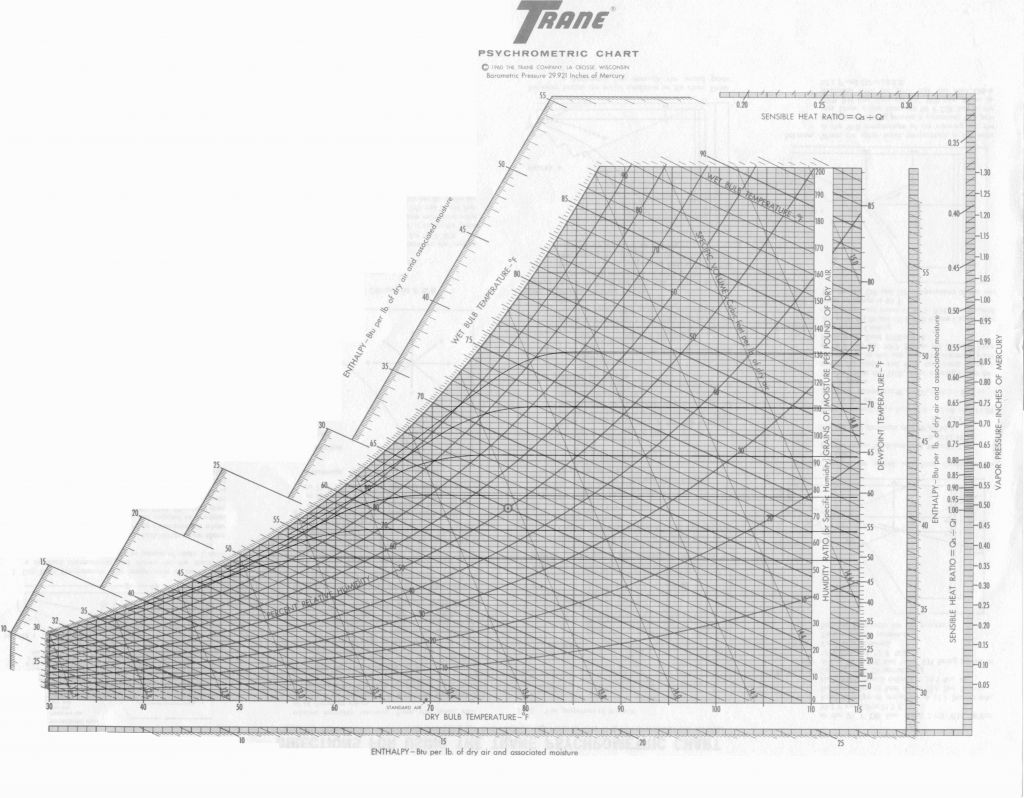Understanding the moisture level in your growing environment
Below is a psychometric chart. While it appears a bit complicated at first glance, it's really pretty straight forward.
Hotter air can hold more moisture than cold air. The total amount of moisture can be read on the right vertical axis. The curved bands running through the chart represent the relative humidity. The other two axis are temperature (wet and dry bulb). For the sake of simplicity consider only dry bulb, as this is the "air temperature" typically measure and reported.
The chart shows that only a slight increase air temperature for the same relative humidity results in a significant increase in total moisture. This particular pyschometric chart is for conditions at sea level - you'll need to acquire a different one from the net if you're signficantly above sea level.
Turned around the other way, a relative humidity reading of 50% can mean nearly no moisture at low temperatures to an extraordinary amount at high temperatures. Let's look at a tangeable example offered by our anonymous-professor who fact checked this for me
At sea level, a RH of 50% at 70 degress F contains about 50 grains (3.24 grams) of moisture per lb. of dry air. That same air with 50% RH at 90 degrees F contains about 110 grains (7.12 grams) of moisture per lb. of dry air. . . so more than double. (1 grain = 0.065 grams)
So in summary, relative humidity or RH is the ratio of the amount of water in the air at a give temperature to the maximum amount it could hold at that temperature; expressed as a percentage

Below is a psychometric chart. While it appears a bit complicated at first glance, it's really pretty straight forward.
Hotter air can hold more moisture than cold air. The total amount of moisture can be read on the right vertical axis. The curved bands running through the chart represent the relative humidity. The other two axis are temperature (wet and dry bulb). For the sake of simplicity consider only dry bulb, as this is the "air temperature" typically measure and reported.
The chart shows that only a slight increase air temperature for the same relative humidity results in a significant increase in total moisture. This particular pyschometric chart is for conditions at sea level - you'll need to acquire a different one from the net if you're signficantly above sea level.
Turned around the other way, a relative humidity reading of 50% can mean nearly no moisture at low temperatures to an extraordinary amount at high temperatures. Let's look at a tangeable example offered by our anonymous-professor who fact checked this for me

At sea level, a RH of 50% at 70 degress F contains about 50 grains (3.24 grams) of moisture per lb. of dry air. That same air with 50% RH at 90 degrees F contains about 110 grains (7.12 grams) of moisture per lb. of dry air. . . so more than double. (1 grain = 0.065 grams)
So in summary, relative humidity or RH is the ratio of the amount of water in the air at a give temperature to the maximum amount it could hold at that temperature; expressed as a percentage




